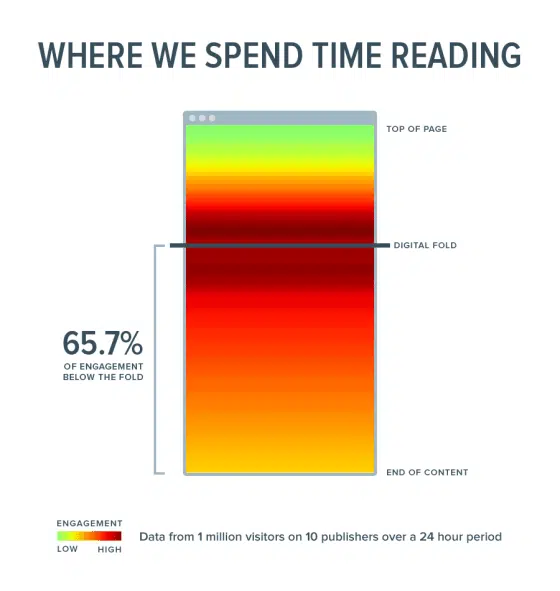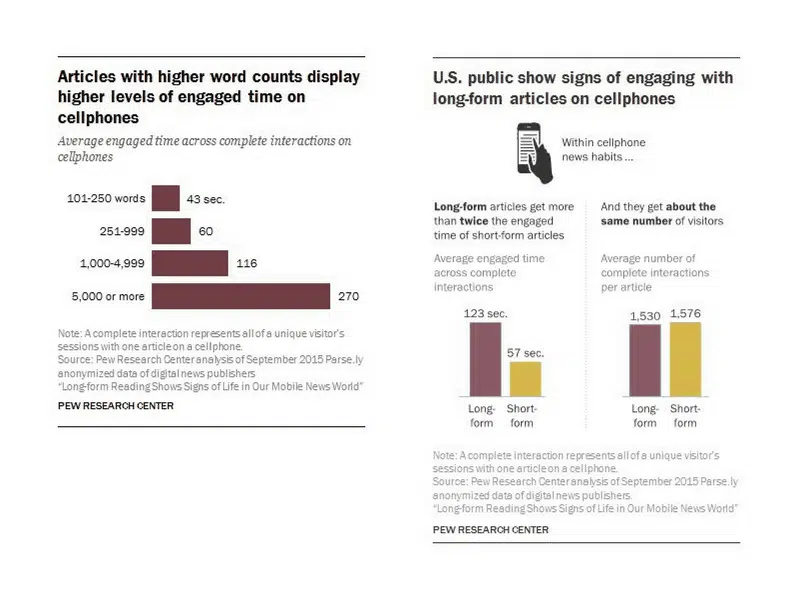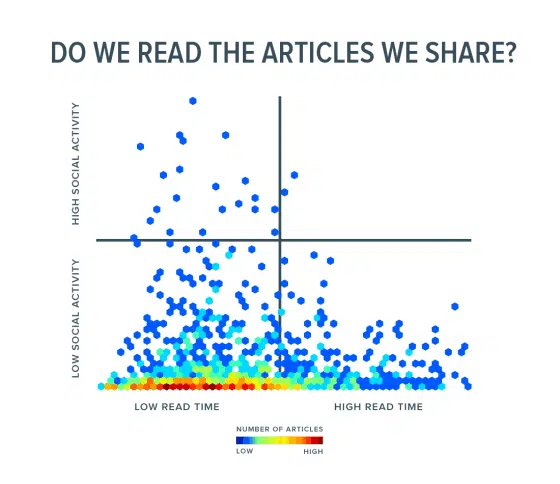The first evidence of reading dates back to the 8th century. The word reading has been derived from the word ‘Readingas‘ which came from the anglo-saxon tribe whose name reads “Reada’s People” in Old English. In the 19th century, The Pencil of Nature by Fox Talbot became the first book to be illustrated with photographic prints. Still, when it comes to reading on the web, 55% of us spent fewer than 15 seconds actively on a page. How users read online has always been a subject of debate.
The initial research conducted in 1997 on how users read online summarized the findings in two words: they don’t. Users prefer to scan web content, reading only important words & sentences. Time is a rare scare resource on the web, and we spend more of our time with good content than with bad. Unfortunately, quality of content is not the only parameter which contributes to Attention Web instead it is a collection of signals and changes.
How Users Read Online?
Web Page Structure & Reading
Most publishers spent time optimizing content above the fold however recent research from Chartbeat suggests that 66% of attention on a web page is spent below the fold. Publishers today rely on data to make decisions as conventional wisdom would suggest banner advertisements to be placed above the fold.

Data from Chartbeat also found that there was a positive correlation between brand recall and engaged time. Users who spent 15 or more seconds on a web page are 25% more likely to recall the brand than users who read for 10 seconds or less.
Also, the research found that there is no correlation between social sharing & the total engagement time. Social sharing certainly leads to a higher influx of traffic but doesn’t have an impact on the total engaged time per user. In the study covering 10,000 social articles, found that the story with the most substantial number of tweets got about 20% of the total engaged time that the most engaging story received.
Web Content: Word Count

In 2015, Pew Research Center partnered with Parse.ly to understand how users engage with long-form content on mobile. The study covering 74,840 articles from 30 news websites found that long-form stories with 1000 or more words had twice the engaged time of 123 seconds compared to short-form stories with 57 seconds.
The gap remains consistent irrespective of the source of traffic and the time of the day. The only notable difference found was that returning visitors spend 277 seconds with the article compared with 123 seconds for users overall.
Reading Patterns
Gutenberg diagram studied reading behavior in the late 1400’s to introduce the concept of reading gravity. He divided the visible content into four different quadrants: Prime, Strong, Weak & Terminal. Reading gravity is useful in understanding pages which don’t host reading content.
F Pattern for reading web content
In 2006, Google’s eye-tracking study found that users frequently scan the website prose in an F Pattern. Users focus on content that appears on the top and left side of the page ignoring the rest. F is the dominant reading pattern on the web however its a rough, general shape rather than a uniform, pixel-perfect behavior.
Z Pattern for Reading Web Content
Z Pattern of reading follows the letter Z. In this pattern, the user scans the page from left to right and then top to bottom. They only stop to read the content if something catches their eye. Z Pattern usually occurs on pages that don’t focus on reading text content. Z Patterns works for a page where the focus is on the call-to-action which requires the user to take a certain action.
American Author, Robert Frost said “No tears in the writer, no tears in the reader. No surprise in the writer, no surprise in the reader.” As users read online, it is our responsibility as publishers and marketer to look for signals that contribute to reading being a delightful experience.


